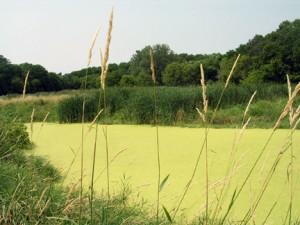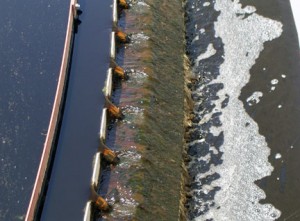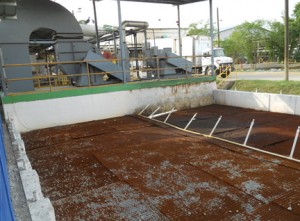Avoid the Pitfalls of Summer Waste Treatment
While many of us savor the sounds, smells, and extended daylight of summer, wastewater treatment plant operators often dread it.
The heat of summer requires constant attention to avoid plant upsets.
Like it or not, summer is just around the corner, so now is the time to assess the health and history of your plant to avoid these pitfalls. Temperature affects nearly every process of a treatment plant. On the positive side, the warmer weather offers the following benefits:
- Denitrification (and nitrification) efficiencies are improved
- Decreased energy requirements to keep anaerobic digesters at the required warm temperatures of 35°C (mesophilic) or 55°C (thermophilic)
- Increases in BOD and COD removal efficiencies
Conversely, this article will discuss those challenges often presented by warmer weather.
Algae
Routine maintenance for pond systems is essential to keeping them operating properly during the summer months. Blue-green algae can form a thick mat on the pond surface, blocking out sunlight and air. In addition, duckweed, watermeal, and hyacinth can grow on the water surface causing similar issues. Also, odor issues can occur from algae and anaerobic conditions.
Solutions
- Minimize nutrient loads in water
- Pond surface should be skimmed frequently to remove and/or break up surface accumulations
- Water fowl and rodents can be discouraged by mowing pond banks and altering the pond level. Significant water fowl can contribute to fecal coliform levels and TSS.
Filamentous Organisms
Biological activity increases with temperature. In fact, the reproductive rate of bacteria increases by a factor of one log for every increase of 10°C. This means that sludge wasting needs to increase to maintain a constant mean cell residence time (MCRT). If this adjustment is not made, the food to microorganism (F:M) ratio will decrease and the quality of the bacteria will start to decrease.
Solutions
- Chlorination can help control filamentous bacteria
- Routinely monitor and clean algae growth on clarifier weirs to prevent clogging washing algae (high TSS) to the effluent
Odors
As previously mentioned, increasing temperatures result in an increase in biological activity, thus increasing oxygen demand. If the higher oxygen supply is not available, facultative and/or anaerobic activity will result, allowing the possibility that microbes known as “sulfate-reducing bacteria” will thrive. The byproduct of this activity is hydrogen sulfide (H2S). This byproduct has a low solubility in the wastewater and a strong, offensive, rotten-egg odor. In addition to its odor, H2S can cause severe corrosion problems. The following actions can be taken to reduce odors:
Solutions
- Increase aeration to limit septic areas from forming
- Add hydrogen peroxide to act as a temporary source of oxygen
- Increase the movement of wastewaters, either by increasing/adding mixing or by changing flow patterns
- Increase sludge wasting
Follow these steps to avoid the pitfalls of summertime and enjoy the warm weather!



Leave a Comment